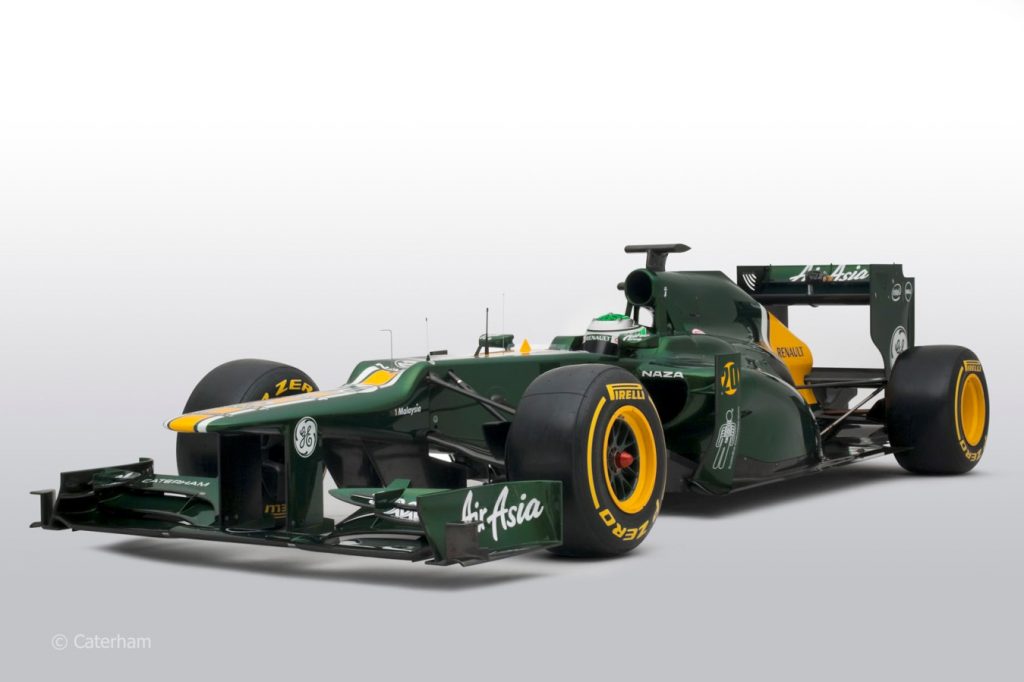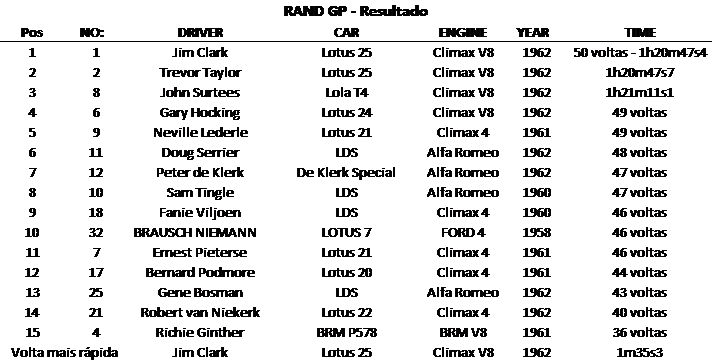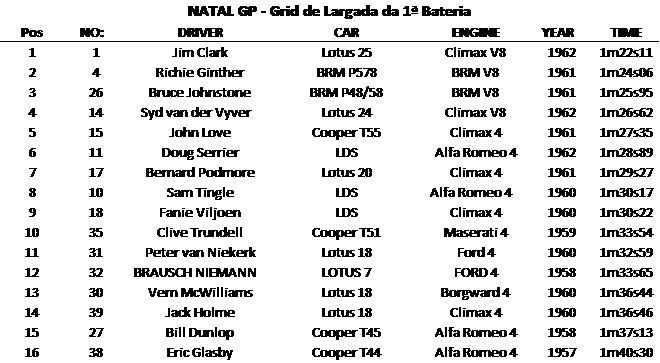clear
599 / 5.000
Resultados de tradução
Resultado da tradução
Some may still remember that until recently the Caterham team competed in Formula 1, almost always starting at the back of the grid, and getting the checkered flag in positions that were not much better. In addition to this obscure passage through F1, most may know the English company for the classic Caterham 7, a direct descendants of the Lotus 7, created in 1957 and considered the embodiment of the philosophy of performance through low weight and simplicity created by Colin Chapman. What almost no one should know is that, on two occasions, a legitimate Lotus 7 was registered and competed in Formula 1 races, albeit non-championship ones.

To understand the context that made this possible, we have to go back in time a little and better understand the history of Formula 1. Disputed since 1950, several exotic cars have competed in the category and, although it seems unlikely today, where even tests are practically prohibited, for many years so-called non-championship events were held, and even championships were held using the same set of rules (or almost) as the category, in countries such as the United Kingdom, South Africa and Argentina. Well, as we already said, in 1960, a Formula 1 championship was formed in South Africa, contested by cars that had recently been retired from the world championship and also by cars created by local manufacturers. One of these local builders was Ambraüsus ”Brausch” Niemann. In the 1962 season, the South African GP would be held on December 29th, and two of the local races were scheduled in the two weeks before the main GP, which resulted in a record number of entries. For the two races, the Rand Grand Prix and the Natal Grand Prix, several local machines were entered, such as the LDS, Assegai and Netuar, with different configurations and engines, but without a doubt the most exotic of all was the one created by Niemann. The South African already had a local reputation for being a good driver and a skilled mechanic, and for these events he prepared a 1958 Lotus 7 Series 1, so that the little Englishman could fit into the Formula 1 regulations at the time.
![Lotus 7 Series 1 1958. Fonte: Hagley Museum and Library [2].](https://nivelandoaengenharia.com.br/wp-content/uploads/Lotus_7_Series_1.jpg)
To achieve this, Niemann cut the chassis lengthwise, reducing the overall length by 2 inches, and the fenders were removed so that the model became a true open wheeler. Furthermore, the car was equipped with an engine taken from a Ford Consul Classic 109E, with a displacement increased to 1475 cm³, with four Amal carburetors and a special cylinder head and camshafts. To handle the extra power, ventilated disc brakes taken from a Mercedes 180 were installed at the front, and the rear axle was replaced by one of Austin origin, with floating wheel hubs for safety, and as there was no self-locking differential, a system similar to Gurgel’s Seletraction was installed to block the inner wheel when cornering. This system consists of two levers similar to the handbrake, each capable of blocking one of the wheels according to the driver/pilot’s command. The car was painted red and was given the number 32, heading to the dispute afterwards.
15/december – Rand Grand Prix
When the day of the race arrived at the famous Kyalami track, the number of entries was really high, so the race organizers created a pre-classification criterion: to compete, the participant had to achieve a minimum lap time of 1m45s in the classification. , and to everyone’s surprise Niemann managed to come in last place, with a time of 1m44s5, which is more impressive if we take into account that among the participants who did not qualify were cars such as the Lotus 20 Formula Junior and the Cooper T45, cars which had competed in the F1 world championship between 1957 and 1958.

During the race, the factory cars stood out, with Jim Clark maintaining the first starting position, followed by Trevor Taylor, John Surtees and Gary Hocking. More surprising than the start, Niemann managed to finish in 10th position, ahead of three Lotus-Climax, cars more powerful and capable than his small Lotus 7. In one of the passages through the radar positioned on the track, Niemann’s car reached 127 mph (204 km/h), and the tale says that Colin Chapman was heard saying that this must be the fastest Lotus 7 in the world, when he saw it pass right in the slipstream of Jim Clark’s Lotus 25 on the Kyalami straight.

22/december – Natal Grand Prix
![O Lotus 7 de Niemann a frente do Cooper T55 de John Love no Natal GP de 1962. Fonte: Lotus 7 Register [3].](https://nivelandoaengenharia.com.br/wp-content/uploads/Brausch_Niemann_Lotus_7_F1_Natal_GP_1962.jpg)
The following week, it was time for the Christmas Grand Prix, named for its proximity to the festive date. The participants were practically the same, and once again, Brausch managed to qualify, again achieving 21st position. In this race, the large number of participants was divided into two heats of 22 laps, from which the best drivers would qualify for a final of 33 laps, and Brausch fell in the first heat, taking 12th position on the starting grid. Unfortunately he retired due to problems during the heat, which was won by BRM’s Richie Ginther, whilst the final was won by the other Lotus driver, Trevor Taylor.

Niemann would still compete in two rounds of the Formula 1 World Championship in the 1963 and 1965 South African GPs with a Formula Junior Lotus 22 adapted to the F1 regulations, and after some success in the South African Formula Junior championships, he began focus on the Enduro motorcycle championships, where he became South African champion in 1979.
Fontes:
1962 Springbok Series. Available at: http://www.lotus7register.co.uk/springbk.htm. Access in: 30/06/2016.
V Rand Grand Prix. Available at: http://www.chicanef1.com/racetit.pl?year=1962&gp=Rand%20GP&r=1. Access in 30/06/2016.
II Natal Grand Prix. Available at: http://www.chicanef1.com/racetit.pl?year=1962&gp=Natal%20GP&r=1. Access in 30/06/2016.
Images:
[1]: Disclosure
[2]: From: The Lotus Seven – A No-Frills Sports Car. Available at: http://vinson.hagleyblogs.org/2013/04/the-lotus-seven-a-no-frills-sports-car/. Access in 30/06/2016.
[3]: From: 1962 Springbok Series. Available at: http://www.lotus7register.co.uk/springbk.htm. Access in: 30/06/2016.

